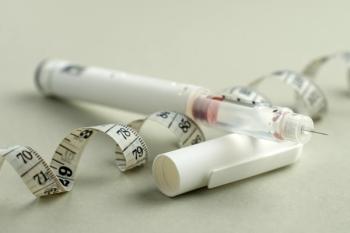
Navigating GLP-1 Medications: Prior Authorization Challenges and Solutions
The expert explored the complex prior authorization process for GLP-1 medications, discussing challenges in documentation and medical necessity.
In an interview with Pharmacy Times®, Mike Cohn, vice president of network operations at CoverMyMeds, discussed the primary uses of glucagon-like peptide-1 (GLP-1) medications, which include managing type 2 diabetes, weight, and cardiovascular risk, while highlighting the complexities of their prior authorization process. He explained the challenges care teams face, such as high volumes of prior authorization requests, complex documentation requirements, and the need to prove medical necessity. Cohn emphasized the importance of electronic prior authorization (EPA) solutions in streamlining the process and providing real-time access to insurance-specific criteria. Throughout the interview, he stressed the need for tailored, patient-specific approaches and the ongoing challenges in medication access and affordability.
Pharmacy Times: Can you start by introducing yourself and discussing your career?
Mike Cohn: Absolutely. Well, first, I appreciate you taking the time to speak with us on this important topic. I also want to note that I've had the fortune and privilege to be in health care my entire career, both on the client side and the business side, working directly with providers and pharmacies and pharma manufacturers. I also have had the opportunity to work in corporate strategy, M&A integrations, and things like that, bringing a unique perspective. However, I'm not a medical professional, so I will say it's important for patients to consult with their medical professional for the most current and detailed information.
Pharmacy Times: Can you explain the primary mechanisms of action for GLP-1 receptor agonists and list their FDA-approved indications? How do these indications directly impact the prior authorization process?
Cohn: GLP-1s are medications for managing type 2 diabetes, weight, and cardiovascular risk. If you look at the future indication pipeline, there's likely a lot more coming, but as of now, type 2 diabetes, weight, and cardiovascular risk are the main 3. The prior authorization, or you might hear the term prior auth, or even PA process, for these drugs is often very complex. It requires detailed documentation of the patient's medical history, and coverage varies across health plans. What we see is payers may consider the cost of the medication and the potential added benefits to the patient when making decisions as to whether the prior auth will be approved or not. Further, care teams are navigating extremely high volumes of prior auths for GLP-1s due to their popularity. What we've seen is these challenges create access and affordability barriers for patients who are waiting for their prescribed medication, and to help patients access the medications they need. Solutions like electronic prior auth, or EPA, can help streamline the process. The last thing for consideration is people who aren't in health care when I tell them fax and phone are still very prevalent to manage access and affordability, and people are shocked. But what we have found at CoverMyMeds is electronic prior authorization can, of course, result in faster determinations. It is important that we have solutions that integrate directly into health care providers' workflow.
Pharmacy Times: What are the common challenges you've encountered in understanding and applying coverage criteria for these drugs, and how do you overcome them?
Cohn: There are 3 common challenges that we've heard from providers and care teams, 3 that come to mind at least. First is the high volume of prior authorizations, like I mentioned. The rise in popularity of GLP-1s, especially when prescribed for weight loss, has led to an increase in prior auth requests. With that, second, prior auth for GLP-1s tends to be more complex. Care teams are spending more time gathering, submitting, and supporting documentation that is needed to meet prior auth requirements across different payers. Third, I would say, care teams often face challenges in providing proof that the medication is necessary. What I mean by that is determining patients’ coverage and completing complex forms to support medical necessity are some of the most common reasons for denied prior authorizations.
Pharmacy Times: What specific clinical documentation is absolutely essential when submitting a prior authorization request for a GLP-1?
Cohn: It's a great question. It's usually determined on a case-by-case basis, as each patient's needs are unique. As mentioned, insurance policies and coverage for GLP-1s vary among different health plans. Some typical requirements when submitting prior auth can include documenting medical necessity in the patient's chart, such as BMI and their weight history. Previous lifestyle modifications, like diet and exercise, and their outcomes for the patient. Then any obesity-related comorbidities and reasons why other treatments may have been ineffective. Going back to electronic prior authorizations, or EPA. Solutions like EPA can help provide real-time access to insurance-specific needs and criteria for the care team. This does allow the care team to tailor submissions and avoid missing any required fields to eliminate any potential delay in getting on therapy.
Newsletter
Stay informed on drug updates, treatment guidelines, and pharmacy practice trends—subscribe to Pharmacy Times for weekly clinical insights.



















































































































































































































